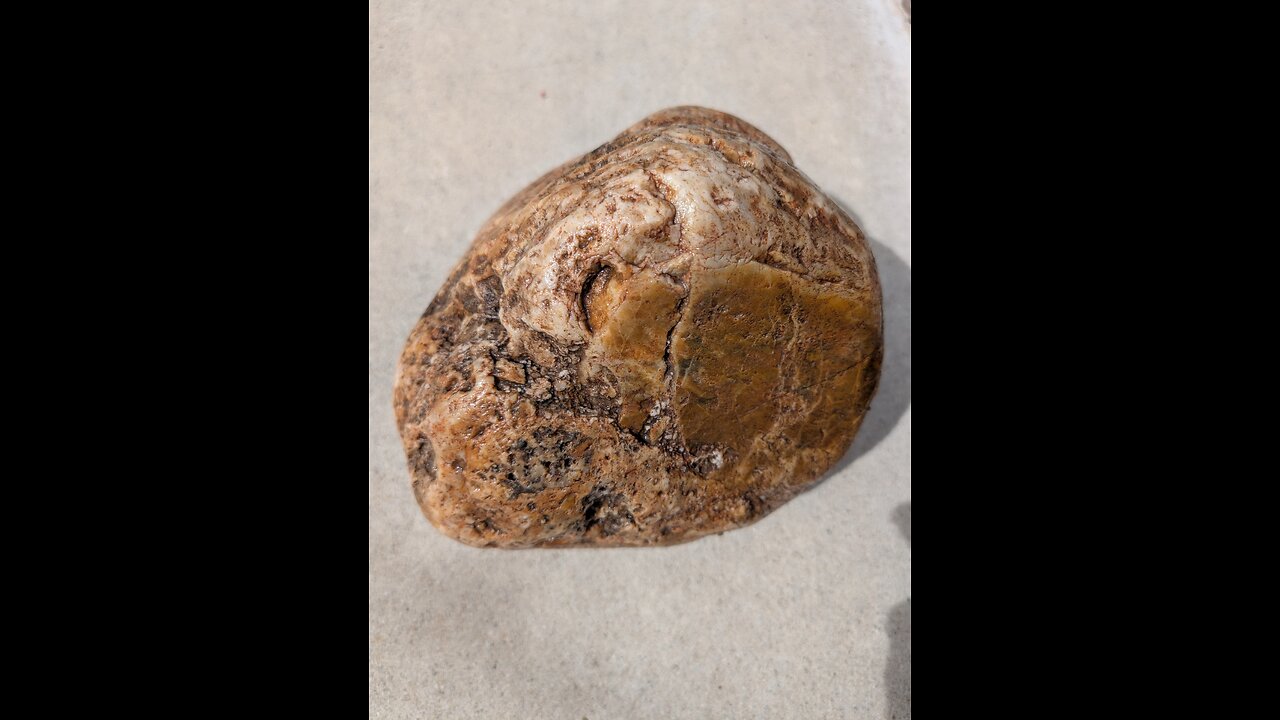Premium Only Content

Big Daddy Breccia!
Breccia is a clastic sedimentary rock characterized by its composition of angular fragments or clasts that are cemented together. Here are some key details about breccia:
Formation: Breccia forms in environments where there is little to no transportation of the rock fragments after they are broken off from their source. This can occur in several settings:
Talus Slopes: At the base of cliffs where rockfalls occur, and the fragments accumulate with minimal movement.
Fault Zones: Where tectonic forces break rocks, and the fragments are cemented in place.
Volcanic Eruptions: Around volcanic vents where explosive eruptions eject angular volcanic material.
Submarine Landslides: In underwater environments where landslides deposit broken rock.
Composition:
Clasts: These are the angular fragments, which can be composed of various rock types like limestone, quartzite, or volcanic rocks.
Matrix: The finer material, often sand, silt, or clay, that fills the spaces between the clasts.
Cement: Minerals like calcite, silica, or iron oxides that bind the clasts and matrix together.
Texture: Breccia has a coarse texture due to the presence of large, angular clasts. The texture is typically poorly sorted because the fragments are not significantly rounded or sorted by size.
Color: The color of breccia depends on the composition of the clasts and the matrix. It can range from light to dark colors, often reflecting the colors of the source rocks.
Types:
Sedimentary Breccia: Formed from the accumulation of broken rock fragments in a sedimentary setting.
Volcanic Breccia: Contains fragments from volcanic activity, often with a mix of volcanic glass or lava pieces.
Fault Gouge: A type of breccia formed along fault lines, often with a finer matrix due to intense grinding.
Uses:
Construction: Due to its durability, breccia can be used in construction for building stone or as an aggregate in concrete.
Decorative: Its unique appearance with angular fragments makes it suitable for decorative stone in landscaping or interior design.
Geological Studies: Breccia provides information about tectonic activity, volcanic processes, or the stability of slopes over geological time.
Geological Significance: Breccia indicates environments of rapid deposition with minimal transport, or areas of significant tectonic or volcanic activity. It's valuable in understanding geological events like faulting, landslides, or volcanic eruptions.
-

BonginoReport
7 hours agoHollyweird Explained By Pop Culture Princess Adrienne Gray - Hayley Caronia (Ep.152)
19.6K7 -
 1:04:02
1:04:02
TheCrucible
3 hours agoThe Extravaganza! EP: 51 (10/09/25)
68.7K6 -
 1:12:57
1:12:57
Kim Iversen
3 hours agoGaza War Over—Or Just on Pause? | California’s Next Governor—Screams at Staff, Hits Husband
15.4K63 -
 LIVE
LIVE
Badlands Media
14 hours agoQuite Frankly Ep. 25
103 watching -
 33:02
33:02
Stephen Gardner
1 hour agoBOMBSHELL: Forensic Expert REVEALS Evidence FBI Missed in Charlie Kirk Case!
12.9K28 -
 37:57
37:57
Simply Bitcoin
10 hours ago $0.46 earnedBitcoin Crucible w/ Alex Stanczyk | EP 3
7.91K2 -
 11:09
11:09
Tundra Tactical
2 hours agoWhat Your Rifle Caliber Says About You In 2025 Tundra Tactical Is Back!
4.54K1 -
 15:43
15:43
ArynneWexler
2 hours agoNONNEGOTIABLE #4: What is going on with Megyn Kelly?
4.62K5 -
 1:01:38
1:01:38
DeVory Darkins
4 hours ago $24.79 earnedSchumer suffers humiliation as critics applaud Trump's historic peace deal with Tim Pool
69.8K24 -
 1:39:38
1:39:38
Redacted News
3 hours agoTrump Secures HISTORIC Gaza Peace Deal... WILL IT HOLD? & What is Lockheed Hiding at Skunkworks?
62.4K93